Barberry Thunberg "Admiration": description, planting and care
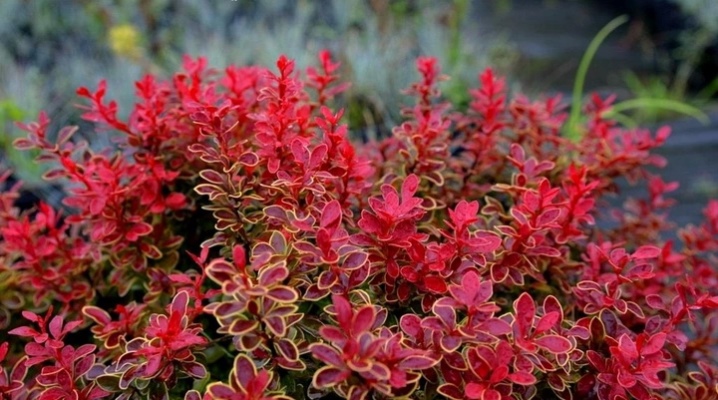
There are a huge number of plants that you can plant on your site. Some of them not only decorate the territory, but also bring certain benefits - they create a shadow or give any fruit. These include barberry.
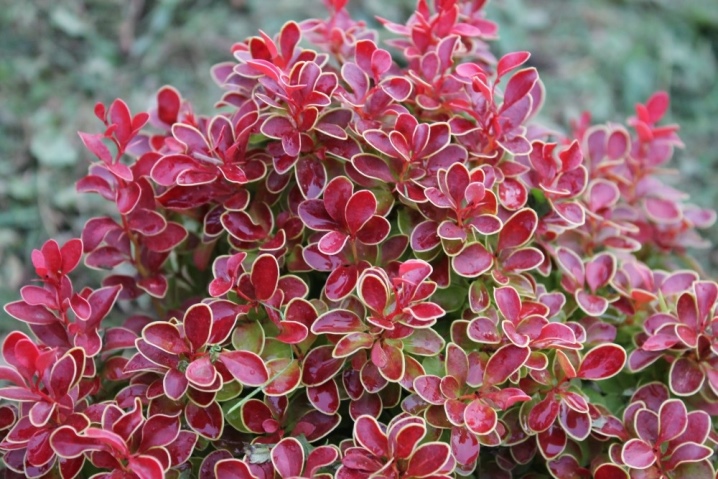
Peculiarities
There are many varieties of this extraordinary plant. Among them it is worth noting the Thunberg barberry "Admiration". Initially, this variety was grown only in China and Japan, but gradually it began to appear in Russia and the CIS countries. The name of this plant in translation from English means "delight". And the bush really pleases the eye with its appearance. If we consider its description, one can understand that this is a low shrub, which reaches up to 55 centimeters in height and up to 90 centimeters in circumference. At first, the crown of this plant is small and spherical. However, over time, the shrub grows. Its leaves are small, up to 2 centimeters in size, besides, they are framed with a yellow border.
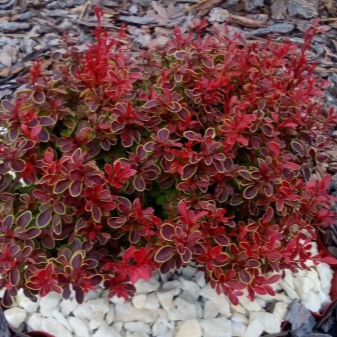
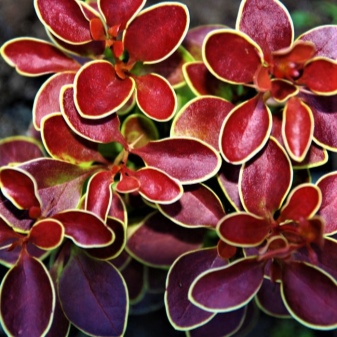
The flowers are pink in color and begin to appear in early May. They are collected in small inflorescences of 3-4 pieces. At this time, the bush looks especially beautiful. Already in the fall, bitter red berries appear in place of flowers. They are not used for food. But their advantage is that such berries adorn the bush even in the cold season. If you form a bush correctly, then in a few years it will have a neat and beautiful crown. However, barberry grows slowly - over a year, the growth is only 15-20 centimeters. His life expectancy with good care reaches 45-50 years. Barberry can be grown even in pots, the main thing is that the roots have enough space.
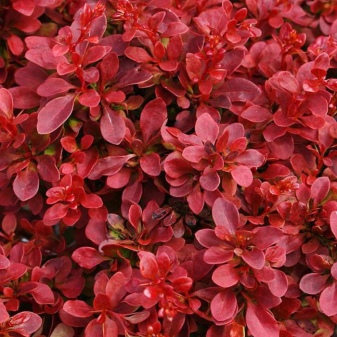

How to plant?
Before deciding to plant a barberry on your site, you need to understand what conditions he needs. It is imperative to purchase a good and high-quality seedling. If it has a closed root system, then bushes can be planted at any time of the year, that is, from the beginning of spring to the end of autumn. After all, such seedlings can very quickly adapt to a new place. Planting barberry with open roots should occur immediately after purchase.
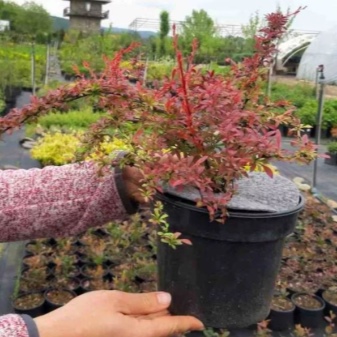
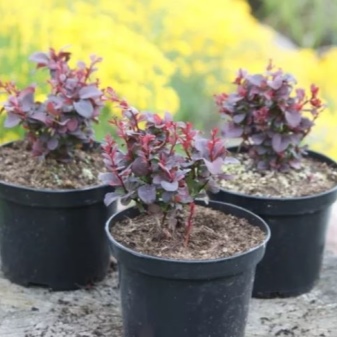
The plant is best planted in open sunny areas or in partial shade. Otherwise, the leaves will lose their bright color, and the shoots will stretch out. In addition, the soil should be light, with neutral amounts of salt and acid. The best barberry "Admiration" grows in sandy and loamy lands.
Seedlings are planted either separately or in whole rows. In the event that the plantings are single, the distance between the bushes should be at least 2 meters. When forming various kinds of hedges, young bushes are planted a little denser. The seedling pit must be prepared in advance, approximately 7-10 days before planting. Its depth should correspond to the size of the barberry root system. To create hedges, continuous trenches are most often dug.

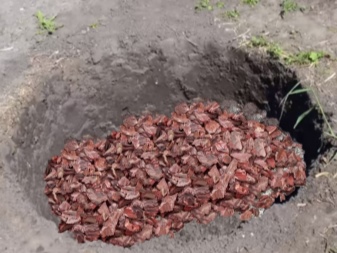
At the bottom, it is necessary to lay out a drainage layer of expanded clay, fine gravel or broken brick. After that, you need to sprinkle everything with the substrate prepared in advance. It can consist of deciduous humus, fine sand, and garden soil. Everything must be taken in equal parts. Above you need to place the seedling, well spreading its roots. Further, all voids are also covered with soil. Then the plant needs to be well watered and compacted. To prevent moisture from evaporating so quickly, the barberry tree trunk circle can be covered with a thick layer of mulch. It is best to use peat or deciduous humus for this. In addition, it is necessary to shorten all the shoots a little to help the plant take root.
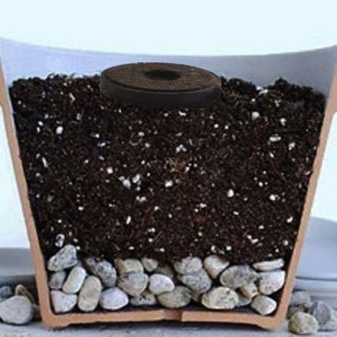
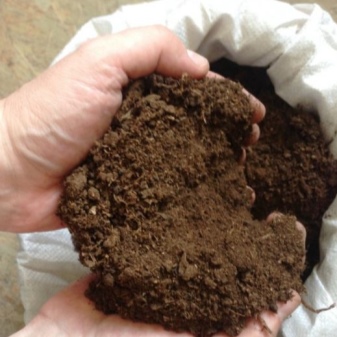
How to take care of it properly?
A plant like barberry requires some care. The land around the bush must be loosened, as well as weeds must be removed so that they do not draw nutrients from the ground. Also, care includes watering, feeding and pruning.
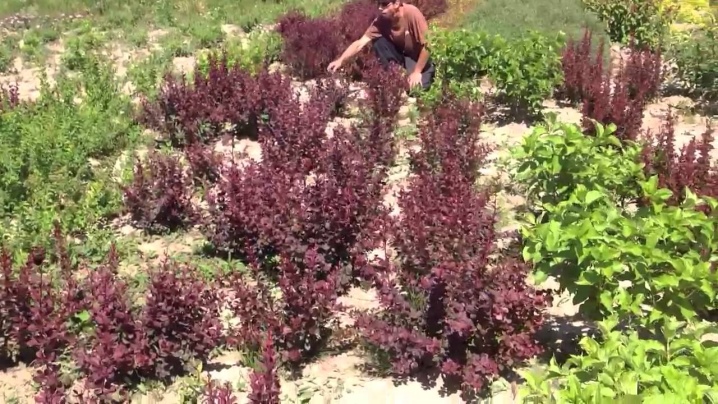
Watering
Any plant needs moisture, and barberry is no exception. At first, the bush is watered as the soil dries out. Further, watering should be carried out 2 times, adding water directly to the root. It is best to keep the water warm. Excess water is harmful to this plant. Therefore, it is not worth pouring the bush, even if it is too hot outside. ZCold water will lead to rotting of the root system.

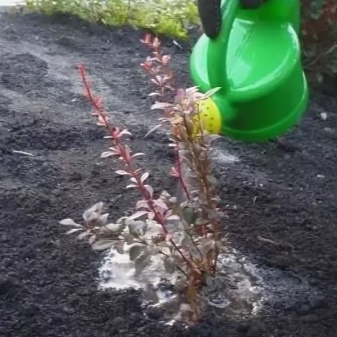
Top dressing
In the first year after planting, you do not need to fertilize. The first feeding should be done only in the second year. It is best to use fertilizers containing nitrogen. This can be a urea solution. It will be enough for the gardener to fall asleep 25 grams per bucket of water. Further dressings are made only after 4 years. If this happens in the spring, nitrogen fertilizers should be used. But in the autumn period, it is necessary to make either potash or phosphorus fertilizing.
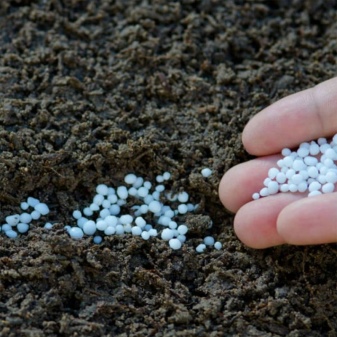

Pruning
Despite the fact that the barberry grows very slowly, it still needs pruning. After all, it will help to improve the appearance of the bush, as well as prevent the appearance of all kinds of diseases. Pruning is carried out 2 times per season. The first time it is done in the spring. At this time, it is necessary to remove all broken, as well as frozen branches. The second formative pruning is carried out in the summer.
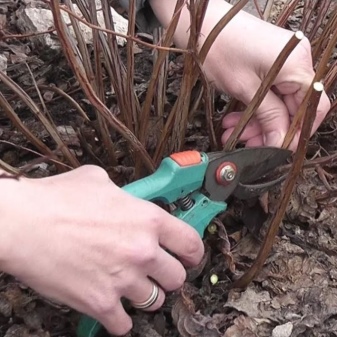

Reproduction methods
You can multiply the number of barberry bushes in different ways.

Seeds
This is one of the most common breeding methods. To get sprouts in the spring, in the fall you need to pick the ripe berries of the "Admiration" barberry, and then separate the seeds from the pulp and dry them well. In this case, you need to know that you need to collect seeds from two different bushes at once. It is necessary to sow the seeds 14 days before the onset of the first frost. The land should be well loosened and fertile. It is necessary to plant seeds to a depth of 3 centimeters.
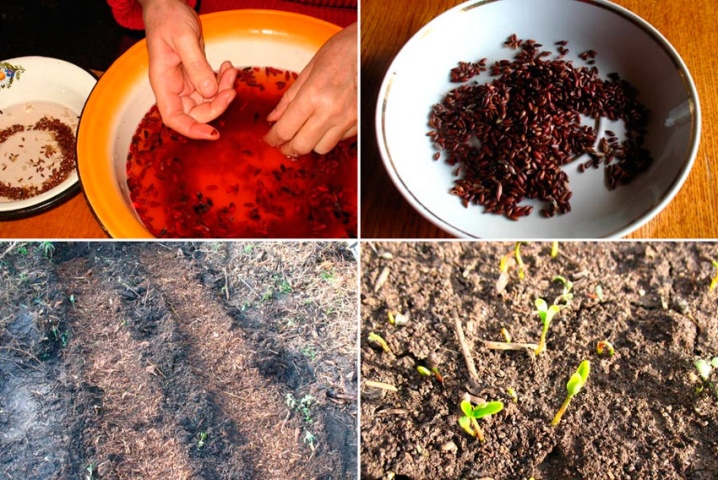
In the spring, when the first shoots appear, they must be thinned out, leaving the strongest ones. Young seedlings can be transplanted to a permanent place only after a year.
Cuttings
Those who use this breeding method will need a greenhouse or small greenhouse. Harvesting cuttings is best done in early June and is best done in the morning. First, you need to remove all the leaves with the exception of those that are at the very top. Next, the cut shoots must be soaked in a root-forming solution. They must be planted in a pre-prepared ground in a greenhouse or greenhouse. For the first 2 weeks, it is imperative to maintain an appropriate level of humidity, and also do not forget about airing the place where the cuttings are grown. With the appearance of new leaves, the seedlings can be hardened. But at the same time, one should not forget about loosening the soil. Plants can be planted in open ground only after 2 years.
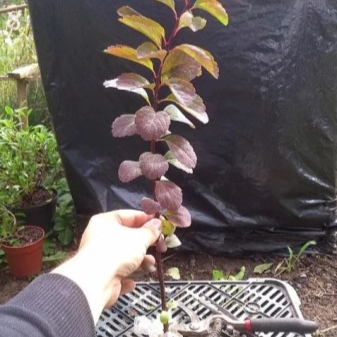
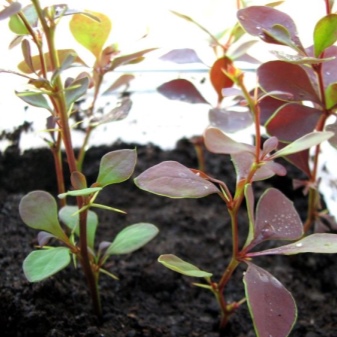
Layers
Having chosen this method of reproduction, it is necessary to use only the youngest shoots. In advance, you need to make small depressions up to 15 centimeters, and then very carefully put the selected sprouts into the prepared ditches. For greater confidence, they must be attached with an improvised hairpin and only then sprinkled with a layer of earth. You also need to know that the tip of the sprout should be above the ground.

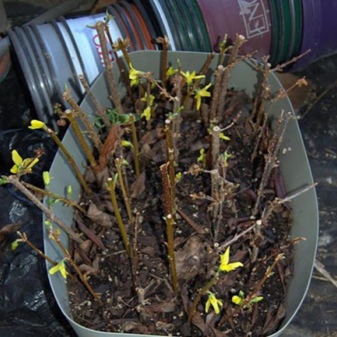
If you plant them in the spring, then by the fall the seedlings will have a full-fledged root system.
By dividing the bush
This option is suitable for early spring. First of all, the bush must be completely dug up. After that, you need to outline the places where the division will be carried out. Moreover, each division must have a certain number of roots. The division can be done with a saw or shovel. Places of cuts must be treated with a special solution or sprinkled with the most common ash. All separated parts must be planted in prepared holes.

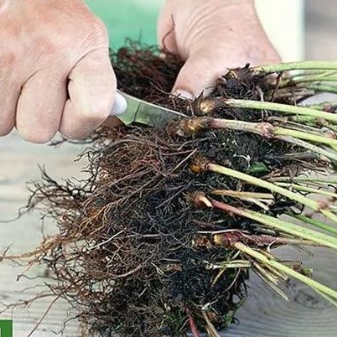
Diseases and pests
Both pests and various diseases can harm the Admiration barberry.
- Barberry aphid. With its appearance, the leaves of the plant wrinkle or curl. To combat it, you must use folk remedies. It is best to use a soapy solution made with 250 grams of grated soap and 1 bucket of water. Also in this case, you can add a pound of shag to the solution.


- Caterpillar eats not only the leaves of the plant, but also its berries. You can fight the pest with chemicals such as Chlorophos or Decis.
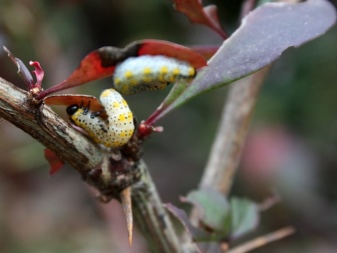

- Powdery mildew - This is a fairly common fungal disease. It manifests itself in the form of a white bloom both on the leaves and on the fruits. To combat it, you must use either colloidal sulfur or lime broth. If the barberry is too much affected, it must be completely dug up and burned.
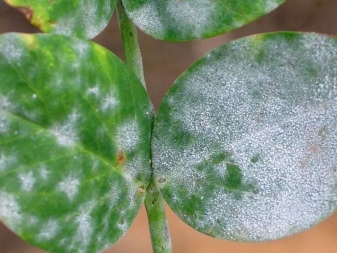
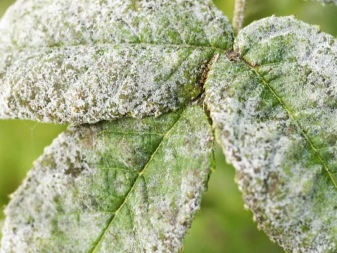
- Rust appears on the plant in the form of orange spots. You can fight this disease with a sulfur solution or use a Bordeaux mixture. It is necessary to repeat the treatment every 2-3 weeks.
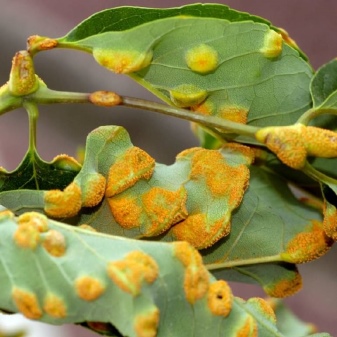
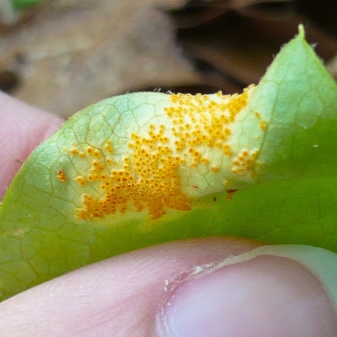
Use in landscape design
Barberry Thunberg "Admiration" is an elegant bush that experts use to create interesting garden projects. Such a plant is suitable for decorating parks, home gardens and even city streets. Many plant barberry bushes along the paths in the gardens. After all, they look great not only in summer, but also in autumn and even in winter. Barberry is often used to decorate fountains and decorate various garden figurines. In addition, the plants are planted with gazebos or pergolas.

The barberry used to create alpine slides looks quite original. In this case, it can be planted at the very bottom, and conifers can be placed on top. At the same time, they must be planted in such a way that in the future the bushes will grow. Summing up, we can say that the Thunberg barberry "Admiration" is perfect for placing on personal plots. After all, caring for him does not take too much time and effort. At the same time, the plant remains beautiful both in summer and winter!
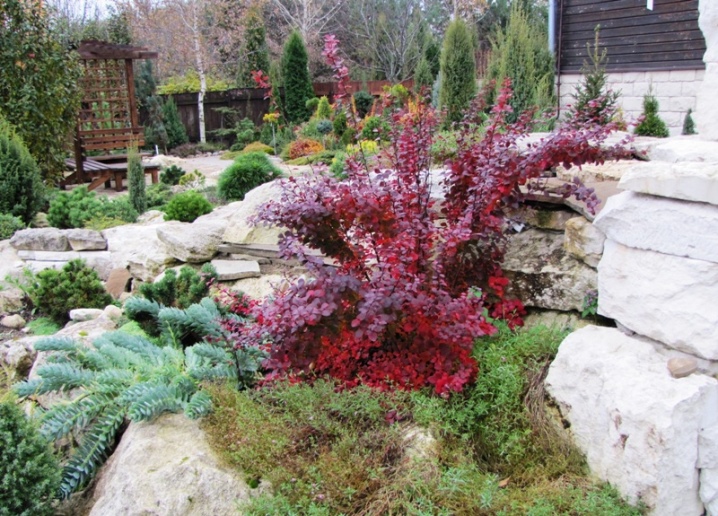
For information on how to properly care for the "Administration" tunberg barberry, see the next video.



































































The comment was sent successfully.